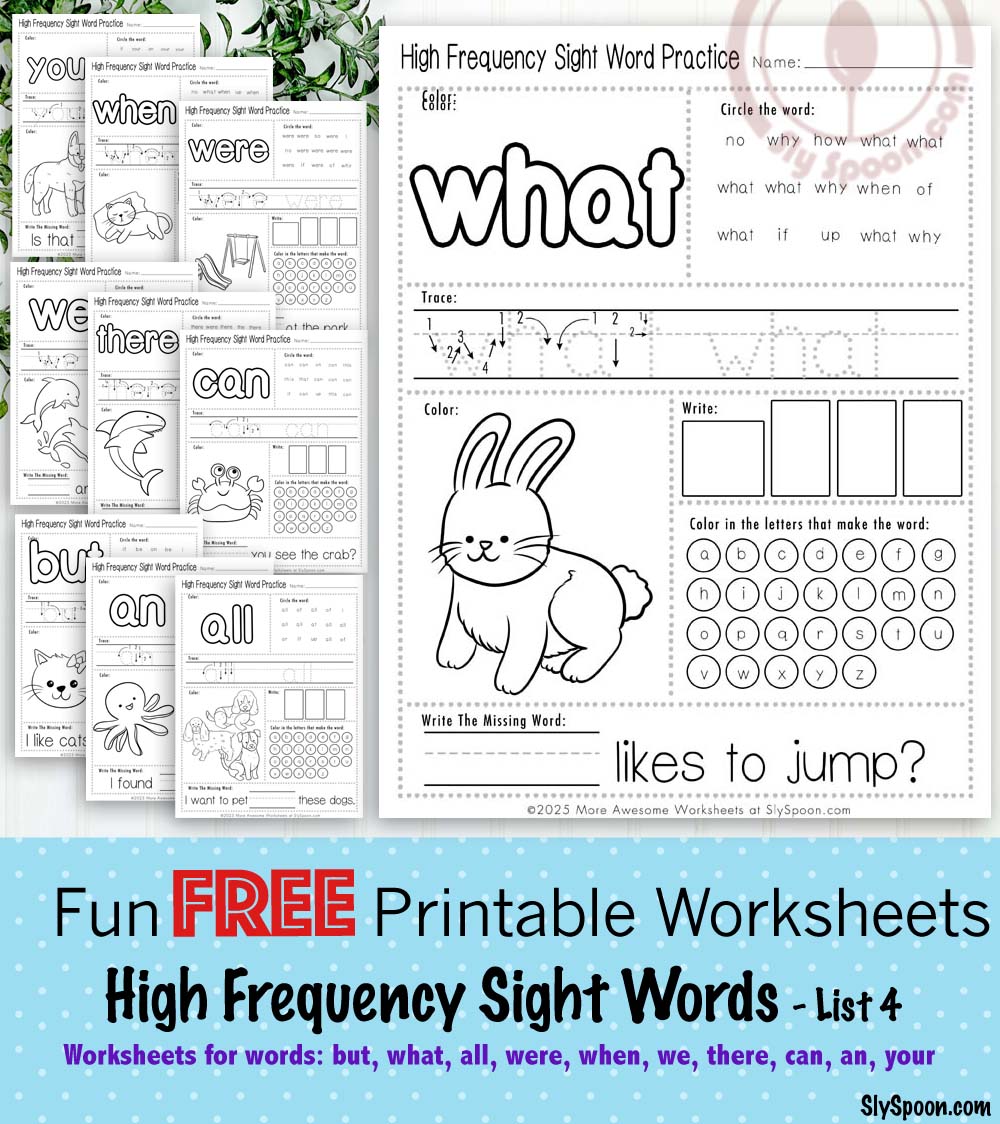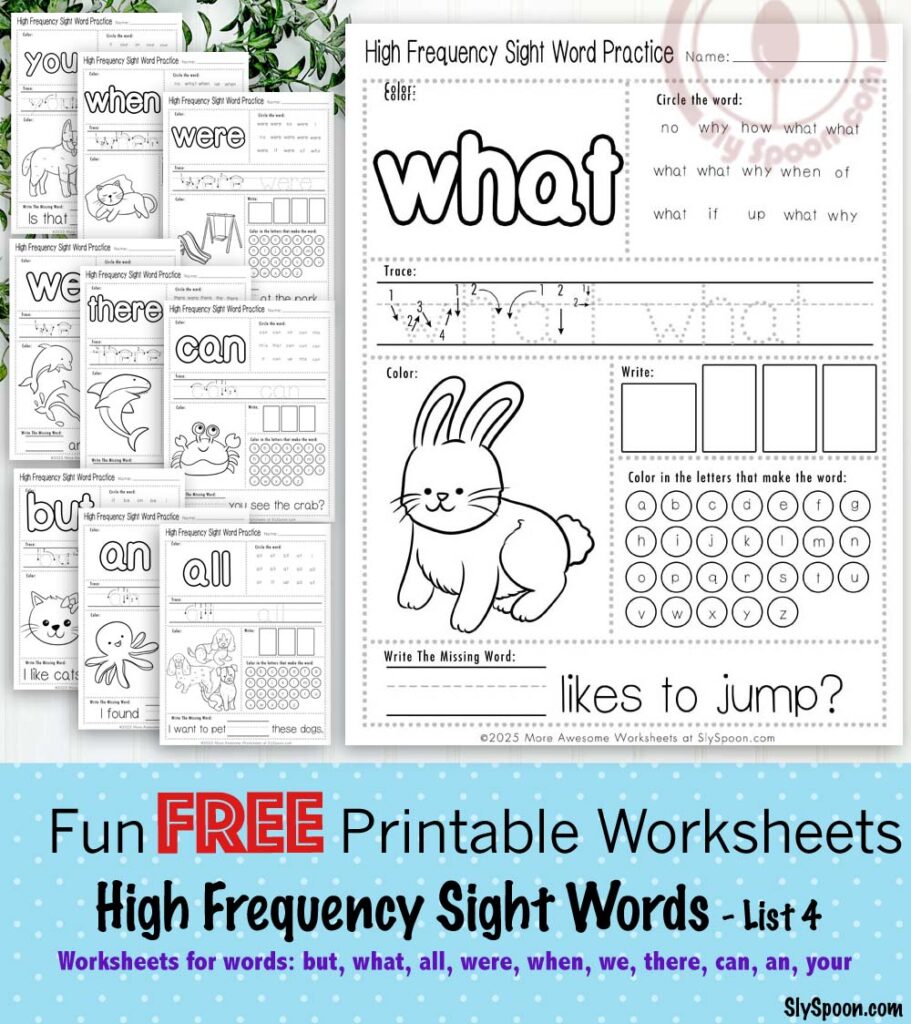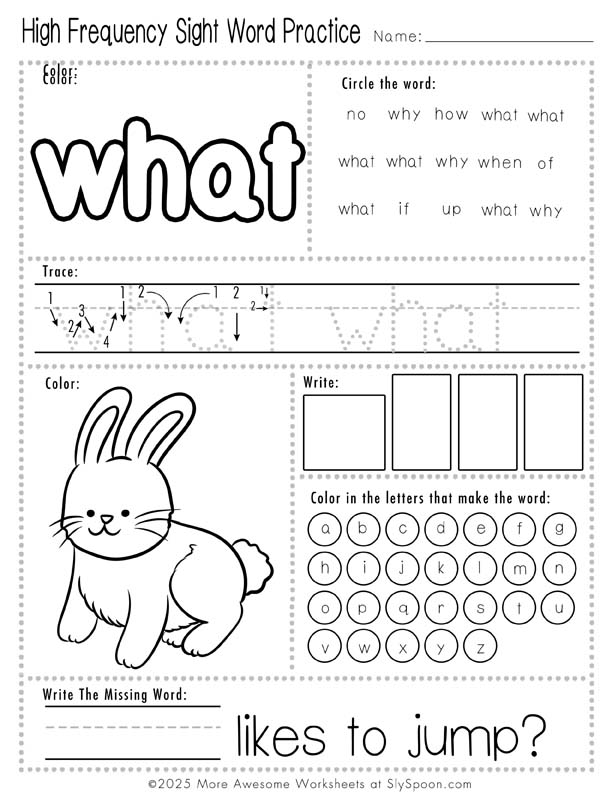This post may contain affiliate links. Read our disclosure policy.
If you’re anything like me, you’re always seeking enjoyable and effective tools to assist your little ones in becoming confident readers. As we explore the realm of early literacy, I’m thrilled to share something special with you—complimentary printable sight word worksheets designed specifically for kindergarteners and young readers!
These charming worksheets are an excellent way to introduce and reinforce crucial sight words for aspiring readers. I have designed a sampler pack that features a range of engaging activities and encourages creativity through fun coloring exercises, making learning effortless. This set concentrates on Sight Word List 4 (4 of 10) and includes the following essential words: but, what, all, were, when, we, there, can, an, and your.
The Importance of Sight Words:
- Foundation of Reading: Sight words represent some of the most commonly used words in texts, laying the groundwork for children to begin reading fluently.
- Improving Fluency: Instantly recognizing sight words enhances reading fluency, allowing learners to prioritize comprehension over decoding.
- Building Confidence: Mastery of sight words can greatly boost a child’s self-assurance in reading, inspiring them to interact more with texts.
- Reducing Frustration: Being familiar with sight words minimizes the number of words that children need to decode, easing frustration and distractions while reading.
- Enhancing Comprehension: When children quickly recognize sight words, they can allocate more mental resources toward understanding the text’s meaning.
Free Printable Sight Word Pages
Don’t forget to Sign up for my Newsletter for even more free, themed tracing worksheets and letter play activities from my extensive collection of resources.
Click Image to Download and Print
Click Image to Download and Print 
Click Image to Download and Print 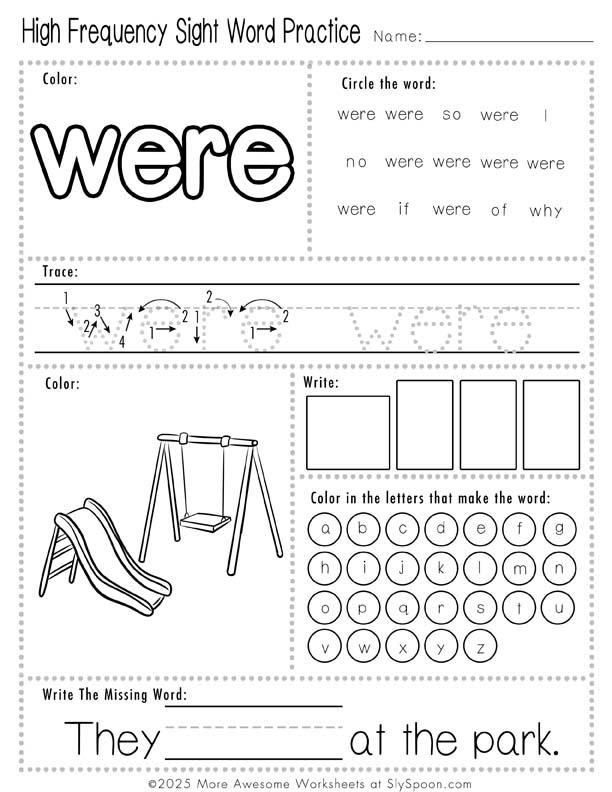
Click Image to Download and Print 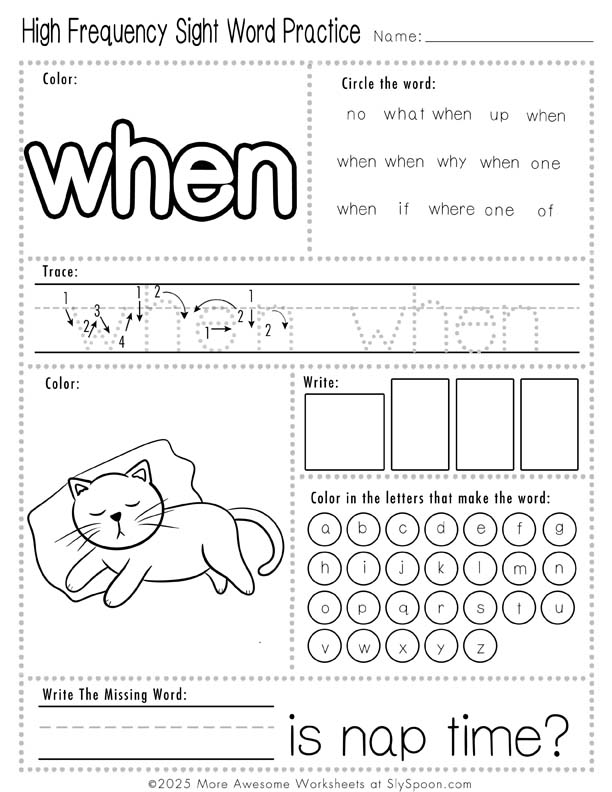
Click Image to Download and Print 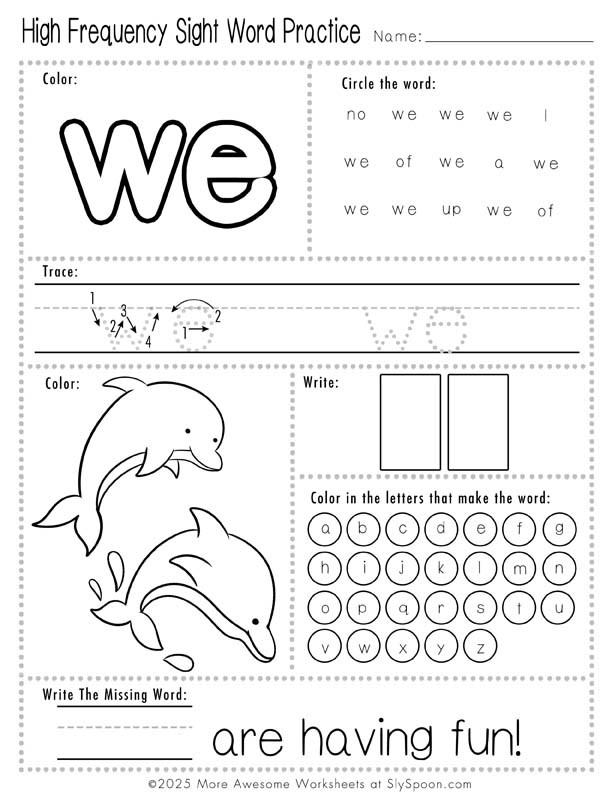 Click Image to Download and Print
Click Image to Download and Print 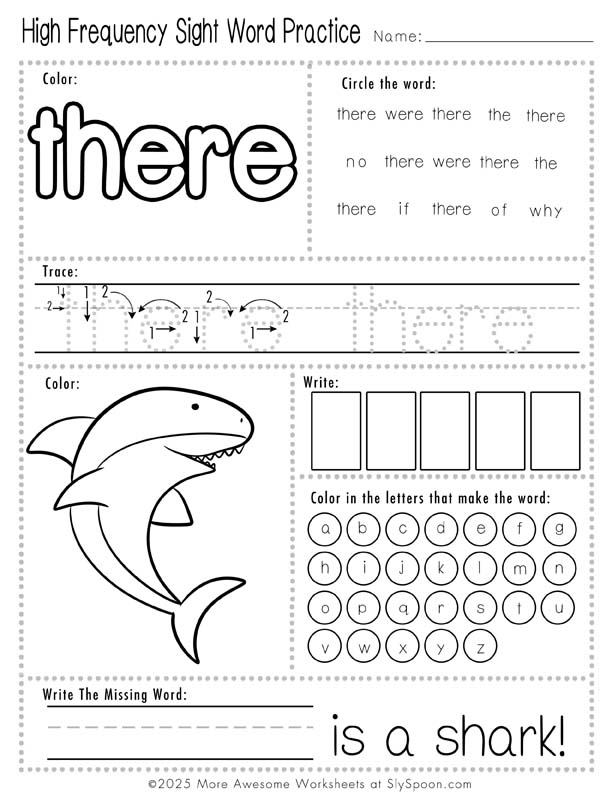 Click Image to Download and Print
Click Image to Download and Print 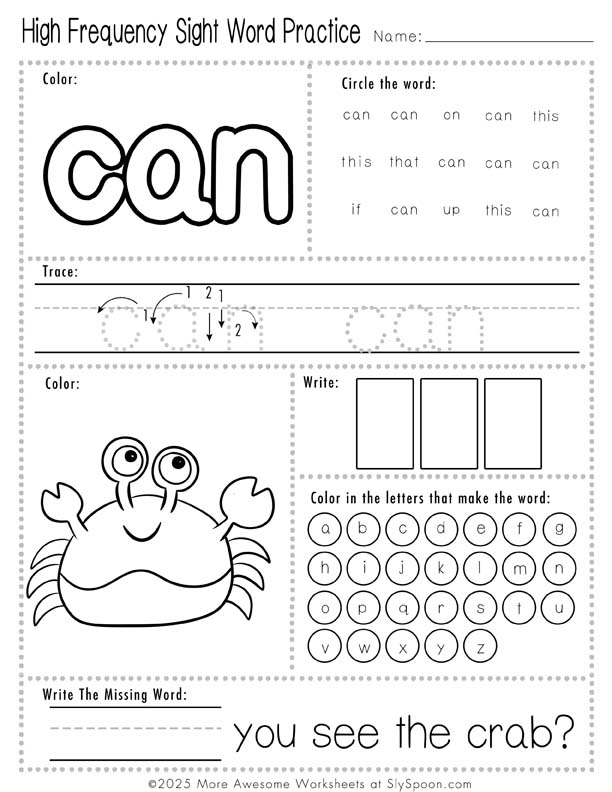 Click Image to Download and Print
Click Image to Download and Print 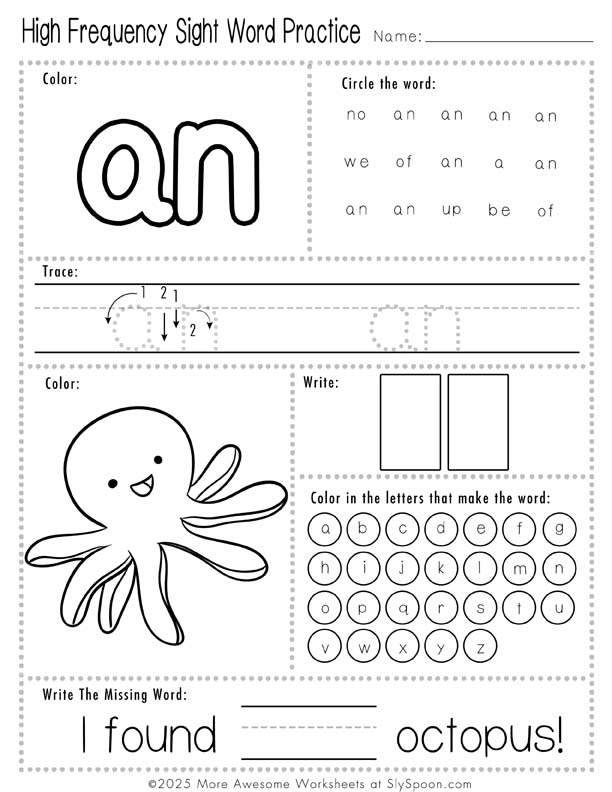 Click Image to Download and Print
Click Image to Download and Print  Click Image to Download and Print
Click Image to Download and Print
Why Sight Words Matter:
- Real-World Application: Sight words relate to everyday vocabulary that children frequently encounter, making them functional for early reading situations.
- Predictable Patterns: Many sight words adhere to familiar patterns, enabling children to recognize them collectively rather than as isolated, unfamiliar terms.
- Memory Retention: Consistent exposure to sight words assists in embedding them into memory, facilitating automatic recognition over time.
- Support for Diverse Learners: Sight words can aid all types of learners, including those with dyslexia or other reading challenges.
How to Practice Sight Words:
- Flashcards: Create flashcards featuring sight words to practice recognition and recall through repetition and active engagement.
- Games and Activities: Incorporate sight words into enjoyable games (like Bingo or matching games) to make learning interactive.
- Reading Aloud: Encourage children to read books that include their sight words, reinforcing recognition and context.
- Writing Practice: Have children write sight words in sentences or stories, helping them connect reading with writing.
- Daily Practice: Integrate sight word practice into everyday routines to reinforce learning consistently.
- Visual Aids: Utilize visual aids (like posters or digital apps) to offer constant exposure to sight words at home and in the classroom.
Additional Benefits:
- Vocabulary Growth: While sight words often consist of basic vocabulary, their recognition can pave the way for a deeper understanding of language.
- Peer Interaction: Encourage reading sessions where peers assist each other with sight words, fostering collaboration and social skills.
- Differentiated Learning: Sight word lists can be adapted to match the individual progress of children at different reading levels.
- Parent/Caregiver Engagement: Involving parents in sight word activities can enhance home learning and promote a positive reading atmosphere.
- Tracking Progress: Evaluating children’s grasp of sight words enables educators to monitor reading growth and adjust instruction to meet changing literacy needs.
Each Worksheet Includes:
- Letter Tracing: Children can practice writing each letter of the sight words, which is essential for developing muscle memory and handwriting skills.
- Coloring: Worksheets come with coloring opportunities, allowing kids to add a splash of creativity while taking a break from decoding tasks.
- Simple Word Writing: This activity is perfect for refining fine motor skills, helping kids strengthen their grip and control—little practice can lead to significant improvements!
- Dot Marker Recognition Activity: Dot markers are a favorite in our home, providing a playful way for kids to engage with sight words and unleash their creativity while exercising different hand muscles.
- Word Recognition: Children will dive into identifying and reading their sight words, which is vital for building reading fluency, and they’ll feel proud as they start to recognize these words.
The best news? All of these worksheets are completely free for you to download and print! Having readily available resources that make learning engaging and enjoyable is incredibly valuable. Whether you’re a homeschooling parent or a dedicated educator, these worksheets are sure to be useful.
So, are you ready to support your child’s reading adventure? Grab these free printable sight word worksheets and witness the joy and accomplishment in their faces. Learning can be a delightful journey, not just a task! Happy teaching!
